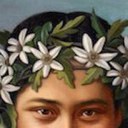0193 Images of the 'Exotic'? Gottfried Lindauer in the Context of European Portraiture
Identifiers (Article)
Identifiers (Files)
Abstract
In 1886, twelve of Gottfried Lindauer’s portraits formed part of the presentation of the British colony New Zealand at the Colonial and Indian Exhibition in London. For the European public, in this context these portraits represented ‘Otherness’, for they were exhibited – and in this way ‘naturalized’ – together with cultural artefacts, members of the indigenous population performing handcrafts, and specimens of nature in greenhouses. The paintings were functionalized into ethnographic-documentary, ‘authentic’ representations of Māori culture. Within this exhibition glorifying colonial power, they were turned into objects displaying British scientific knowledge and prestige. This essay reads Lindauer’s paintings in the context of nineteenth-century European portraiture, a genre where exotic colonial goods and plants were appropriated as luxury items. The resultant constellation marked by exoticizing self-representation in Europe and exoticizing representation of ‘indigenous’ Others reveals the uniqueness of Lindauer’s work, which defies such a schematic classification of exoticization: the portraits were in part commissioned by Māori who wished a pictorial representation of themselves or their relatives. By presenting the Māori nobly as large-sized figures in the portrait genre, Lindauer’s paintings simultaneously offer the scope for various readings.
Statistics


License

This work is licensed under a Creative Commons Attribution-NonCommercial-NoDerivatives 4.0 International License.



